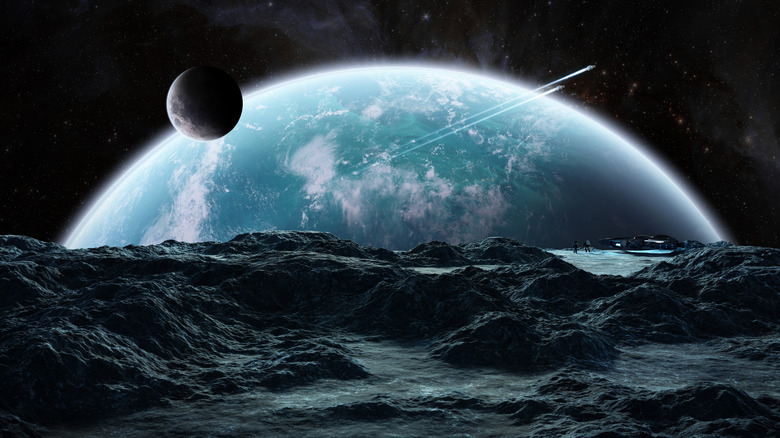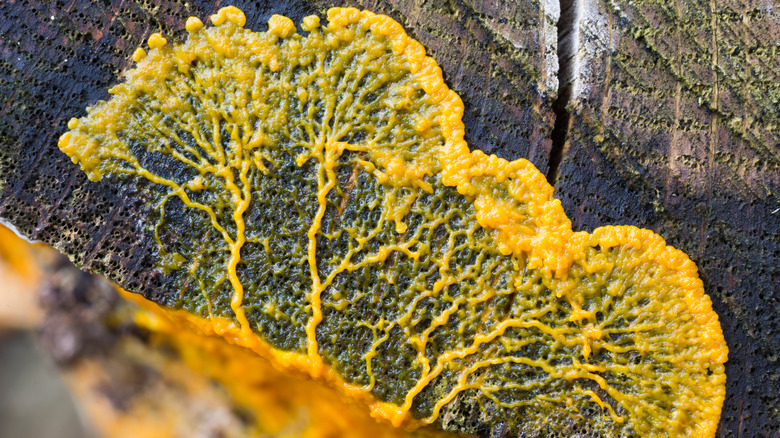What Exactly Is Astrobiology?
So we're all familiar with 2013's "Sharknado" at this point, right? Chomping sharks embedded in tornados buzz-sawing their way through hapless citizens? Yep, we're thinking "Croc-cano" would make a good follow-up franchise (crocodiles jettisoned from volcanic explosions).
But wait, you say. There are actually creatures that live in volcanos? Why yes, and sharks like the Pacific sleeper shark are among them, as Seeker describes. They don't lounge in bubbling lava in open calderas on mountaintops, though. No, they hang out in underwater volcanos along with shrimp, crabs, barnacles, and more. Lots of animals such as these live in extreme conditions — far more extreme than a 5-degree temperature drop that has fragile apes snatching up their hoodies from the floor. The tardigrade gets a lot of attention for this. As Live Science explains, they're near-microscopic creatures — sort of like bears with eight legs and a sucker for a mouth — who can survive temperatures from -200 to 150 degrees Celsius (-328 to 300 degrees Fahrenheit), even in outer space.
This is why some researchers look to extreme environments both on Earth and in space to seek out new life. Even though it's possible that alien species might be bi-symmetrical, bipedal, sensory-headed humanoids like us, because of similar evolutionary pressures, "alien life" would most likely resemble bacteria or tardigrades over Klingons and Vulcans. This line of inquiry and field of research, as the National Center for Science Education (NCSE) says, is known as "astrobiology."
Biomarkers in alien atmospheres
The search for extraterrestrial life has taken a lot of different routes. On one hand, we assume that spacefaring civilizations would emit lots of signals, like radio waves, that otherwise seem cosmically out of place. Such was the case with the infamous Wow! Signal discovered by the Carl Sagan-founded SETI Institute back in 1977, as EarthSky overviews. It seemed to come from somewhere in the constellation Sagittarius. On the other hand, we've got astrobiology checking for more fundamental "biomarkers" of biological life that developed from the same universal chemical source materials as us.
It's not possible to scan the entirety of the cosmos for random asteroids that might contain a handful of frozen bacteria. Rather, we've got to look to exoplanets, which are planets like ours circling stars in other solar systems. And how can we search for biomarkers on such planets when we're all the way back here on Earth's surface? Well, the same way we search for anything else in space: light.
As the National Center for Science Education (NCSE) says, the most distinctive biomarker is a combination of oxygen and methane. Infrared and visible light reveals the presence of such chemicals in atmospheres. Here on our 4.5-billion-year-old Earth, oxygen and methane didn't show up in significant quantities until 2.4 billion years ago, about a full billion years after photosynthetic plants first appeared, as an article published in "Plant Physiology" states. If similar chemical ratios exist elsewhere? Bingo.
Aliens like us
It might seem limiting — and more than a bit egotistical — to assume that if life is going to exist elsewhere, it's going to follow a similar evolutionary path to ours (explained further in The Independent). After all, as Science Alert says, some scientists even speculate that one-dimensional, intelligent cosmic strings might live inside stars. If "life" can be defined like this, and not merely DNA-copying, water-dependent, multi-cellular entities like us, then surely signs of life could be more eccentric than simple oxygen and methane in the atmosphere, right? Absolutely right.
But if we wanted to find such novel forms of life, how would we? Where would we look? What are our definitions? Could we even recognize it if we saw it? There's simply no way to start. There is, however, a concrete way to search for at least one form of life in the universe: the kind built like us. That doesn't mean the other, more out-of-this-world stuff doesn't exist, or that intelligent nanites don't swarm around Proxima Centauri b or whatever. We've just got to start with workable definitions.
Meanwhile, weird creatures in extreme conditions on Earth help us broaden our search. This is true whether an alien atmosphere contains oxygen and methane or not. Slime molds, via Smithsonian Magazine, are one example: acellular "bags of protoplasm" that morph into whatever shape it wants. Not to say that shape-shifting, extraterrestrial slime blobs would be a very heartwarming discovery, but it would still be life, nonetheless.


